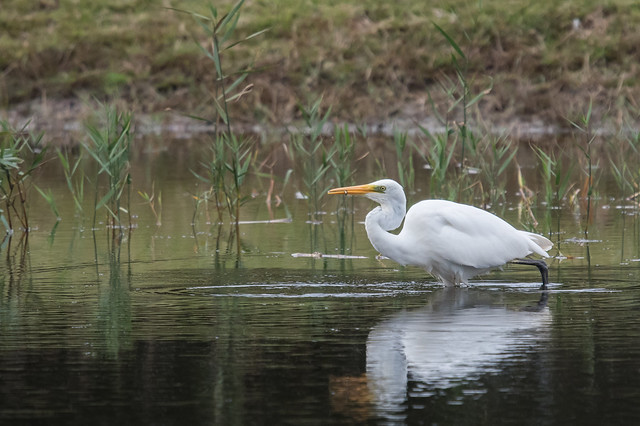
Tim writes: the 8th October started well for me as almost unbelievably this was the second species of bird I saw thiat morning after Moorhen. Numbers three and four were Little Egret and Jack Snipe. The Great White Egret flew into the Canal Scrape at Spurn at 7:10 that morning. When I started birdwatching Great White Egret was a very rare visitor to Britain. Only two were reported in Britain between 1950 and 1973. About one a year was recorded to 1985 then they started to become more frequent. Numbers have continued to grow and now there are dozens of them seen in the UK every year. They started nesting in Somerset in 2012 and that colony has consolidated with a second colony in Norfolk. But large counts of tens of birds have been seen in England this year. My first field guides showed that they were extremely localised in Europe breeding only in Hungary and Romania. But now they are a widespread breeder across much of Europe. They even colonised Finland in 2018.
[registration_form]
Saw my first in the UK in 2001, then 2008, then 2013, 2015 and every year since 2017 without really trying. they are rather special to watch too, all neck legs and elegance. Grating odd alarm call though!
Forty years ago would anyone have suggested little, great and cattle egrets would have started breeding here? The spoonbill is returning of its own accord, the crane is too with a degree of additional assistance. The white stork and great bustard are in reintroduction programs. Bee eaters and black winged stilts seem to be breeding here with increasing frequency, penduline tits may be on the verge of starting. Glossy ibis is looking like a future regular breeder too, perhaps even more amazingly so is the black stork. The pallid harrier has bred as close to us as the Netherlands. I would have been dumbfounded and delighted if I’d known all this would happen when I was 11. I’m fairly confident I’ll live to see the Dalmatian pelican brought back.
This shows the importance of varied habitats, being in good condition , as global warming progresses.